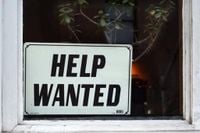On October 1, 2025, the U.S. job market received a jolt from the latest ADP Research report, which revealed that private-sector payrolls fell by 32,000 in September. This unexpected drop followed a revised decline of 3,000 jobs in August, marking the second consecutive month of job losses. The September figure was notably below all estimates in a Bloomberg survey of economists, leaving analysts and policymakers searching for answers amid mounting economic uncertainty.
The ADP report, which serves as a key indicator of labor market health, showed that the number of private-sector jobs slipped from approximately 134,558,000 in August to 134,526,000 in September. While not catastrophic in isolation, the loss was enough to raise eyebrows in financial circles and stir political debate. According to Newsweek, industries such as leisure and hospitality, alongside professional and business services, bore the brunt of the decline. In contrast, education and health services managed to post gains, suggesting that labor market dynamics remain uneven across sectors.
This jobs report landed at a particularly sensitive moment. The Bureau of Labor Statistics (BLS) was scheduled to release its official jobs data on October 3, but the ongoing federal government shutdown threatened to delay that crucial report. In the absence of the BLS data, the ADP numbers took on added importance—though not without controversy. Economists and commentators were quick to point out that ADP’s figures don’t always align with the government’s numbers, and they urged caution in interpreting the results.
Dr. Nela Richardson, ADP’s chief economist, addressed the findings directly in the report. “Despite the strong economic growth we saw in the second quarter, this month's release further validates what we've been seeing in the labor market, that U.S. employers have been cautious with hiring,” she wrote. That sense of caution, it seems, has only deepened as the year has progressed.
George Washington University economist Tara Sinclair echoed this sentiment in her comments to Newsweek. She acknowledged that ADP has worked to improve its methodology, but cautioned that “we have seen cases before where they have reported pretty substantially different numbers.” According to Sinclair, it would not be particularly surprising to see job losses at this point in the economic cycle, but she emphasized that a single month’s decline does not necessarily signal a broader downturn. “When we think about jobs being created, this isn’t just about posting job openings. This is about a match between an employer and a worker, so one reason we’re clearly going to see slowdown in terms of employment numbers, is because there aren’t the workers out there to match with jobs from the employer perspective,” she said. Sinclair also suggested that President Donald Trump’s crackdown on immigration could be playing a significant role in the reduction of job numbers.
Political reactions to the ADP report were swift and sharply divided. White House spokesperson Kush Desai, in a statement to Newsweek, sought to put a positive spin on the numbers by pointing to the administration’s broader economic strategy. “Industry leaders ranging from Apple to Merck to TSMC have announced trillions in historic investment commitments to make and hire in America as a result of President Trump’s tariffs. The Administration is working hard to clean up Joe Biden’s economic disaster with an aggressive pro-growth agenda of tax cuts, deregulation, and energy abundance. As these policies and investments continue to take effect, the American people can rest assured that the best is yet to come – especially once the Federal Reserve finally cuts interest rates.”
Not everyone shared the White House’s optimism. California Governor Gavin Newsom, a Democrat, mocked Trump over the report on X (formerly Twitter), sharing a photograph of the former president with the caption, “Did I do that?” Neera Tanden, the former director of the Domestic Policy Council during the Biden administration, weighed in as well, posting, “Oh look. 32k jobs lost in September. Trump is killing jobs, raising prices and shutting down the government.” Political commentator Brian Krassenstein described the numbers as “terrible,” noting that “Trump's economy lost 32,000 jobs last month according to ADP. Dow Jones had been looking for an INCREASE of 45,000. In addition to the drop in September, the August payrolls number was revised to a loss of 3,000 from an initially reported increase of 54,000.”
Yet, amid the partisan back-and-forth, some voices urged caution and context. Justin Wolfers, an economist, warned on X, “The shutdown robs us of this Friday's jobs report. The ADP report has stepped into the void. It says jobs fell by -32k in September. But be careful: The absence of the BLS data doesn't make the ADP numbers any more reliable. And they haven't been very useful in the past.”
Industry analysts also weighed in on the broader implications of the report. Tahra Hoops, director of economic analysis at the Chamber of Progress, noted on X, “U.S. private employers cut 32K jobs in September, per ADP. Annual rebenchmarking reduced totals by 43K, showing hiring momentum continues to fade, confirming that companies have been slow to higher. This can most likely be attributed to elevated economic uncertainty.” Spencer Hakimian, founder of Tolou Capital Management, didn’t mince words: “I’ve been telling you all for months that we’re in a recession. This is what it looks like.”
With the BLS report delayed, the ADP numbers are likely to remain a focal point for economists, investors, and policymakers in the days ahead. The discrepancy between ADP’s methodology and the official government data has long been a source of debate. While ADP draws on payroll data from its own clients and applies proprietary models, the BLS uses a broader survey of employers, which some argue provides a more comprehensive snapshot of the labor market.
Still, the ADP report is not without value. It offers a timely, if imperfect, glimpse into the private sector’s health. The September numbers suggest that hiring momentum is slowing, especially in industries sensitive to consumer demand and economic cycles. The fact that education and health services are still adding jobs hints at underlying strengths, even as other sectors falter.
For now, uncertainty reigns. The ongoing government shutdown has thrown a wrench into the usual flow of economic data, and the debate over tariffs, immigration, and fiscal policy continues to shape perceptions of the jobs market. Whether the September dip is a blip or the start of a deeper trend remains to be seen, but one thing is clear: the U.S. labor market is at a crossroads, and every new data point is being scrutinized for clues about what comes next.
As the nation waits for the official BLS figures, the ADP report stands as a stark reminder of the volatility and complexity of the current economic moment. Policymakers, business leaders, and workers alike are left to navigate the uncertainty, hoping for clearer answers in the weeks ahead.




